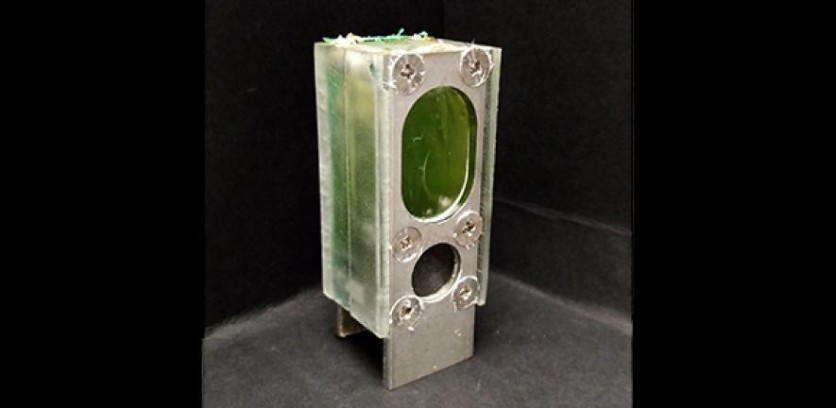
Researchers at the University of Cambridge discovered a way to leverage photosynthesis to power a low-energy computer chip for nearly six months using only blue-green algae. The team sealed a colony of cyanobacteria within a metal box-shaped almost identical to a AA battery. Left on a windowsill for the aforementioned six months, the algae underwent the photosynthesis process and discharged currents of electricity that powered the ARM Cortex-M10+ chip.
The researchers published their findings in the New Scientist journal. Although only a proof of concept, the reality inherent in their study proves the capabilities behind concepts under biophotovoltaics, or in this case specifically, algae photovoltaics. The team is hopeful their work can literally power the future of electronic devices, leveraging the nature around us in more ingenious ways while not destabilizing the environment.
The algae-powered PC could theoretically be brought to other forms of energy. Where even solar power and batteries tend to make a more disastrous impact on the environment, the algae concept would have a far less negative reach and could well be utilized as continuous power in certain use cases.
Related Article: Russia's Electricity Supply Support for Finland Suspended After NATO Alliance Bid Was Announced
"The growing Internet of Things needs an increasing amount of power, and we think this will have to come from systems that can generate energy, rather than simply store it like batteries. Our photosynthetic device doesn't run down the way a battery does because it's continually using light as the energy source," explains the joint senior author of the paper, Professor Christopher Howe, in a University of Cambridge press release.
According to reports via the New Scientist journal, the team's ARM chip did very small forms of workloads, consuming as little as 0.3 microwatts per hour, which is obviously quite minimal when compared to normal PCs, which can take up to 200 Watts an hour, depending on workloads. Even if your PC were to run at an average 100 Watt a clip, a remarkable 333 million alea energy blocks would be necessary to run the thing - and that's a rough estimation.
Thus, continued tests and more research into the productivity of algae-based energy concepts and assorted biophotovoltaics is an utter must if the scientists within the study consider this the future of energy consumption. The blue-green algae used in the experiment didn't necessitate any alternative food source, which made it ideal for the tests, as all of the energy it consumed was from sunlight and was even stored so as to power the device even at night.
Yet another author on the project, Dr. Paolo Bombelli, said the researchers were all "impressed by how consistently the system worked over a long period of time." She adds, "We thought it might stop after a few weeks but it just kept going." It lends credence to the outward viability inherent in leveraging nature to assist us all in our daily needs.
Biophotovoltaics, a concept born from the leveraging of algae in energy, is largely headed by the aforementioned Dr. Bombelli and Alex Driver. The team wants to take the algae-battery concept and mold it into a full biological solar cell using algae in tandem with their term "biophotovoltaic devices." You can read more about their research and findings in the Biophotovoltaics PDF.
ⓒ 2025 TECHTIMES.com All rights reserved. Do not reproduce without permission.




